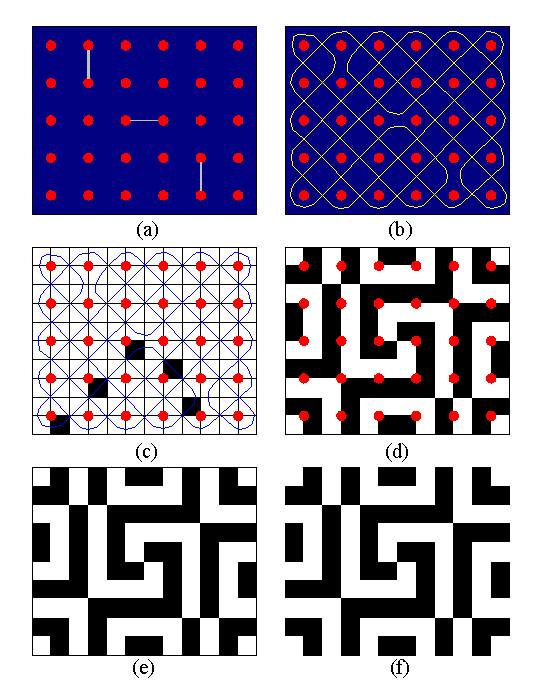|
THE
Let us now consider a rectangle-filling mirror curve.
It passes precisely once through each of the unit squares
of the rectangular grid. This enables us to enumerate the unit
squares through which the curve successively passes,
1, 2, 3, 4,...,4mn. Enumerating them modulo
2, i.e. 1, 0, 1, 0, ..., 0, a (1,0)-matrix is obtained, or,
equivalently, by colouring the successive unit squares alternately
black
(= 1)
and white
(= 0), a black-and-white design is produced.
Figure 7 presents an example of the generation of such a
black-and-
white design.
As this type of black-and-white design was
discovered in the context of analysing sand drawings from the
Tchokwe, who predominantly inhabit the north-eastern part of Angola,
a region called Lunda, I have given them the name of
Lunda-designs.
|
